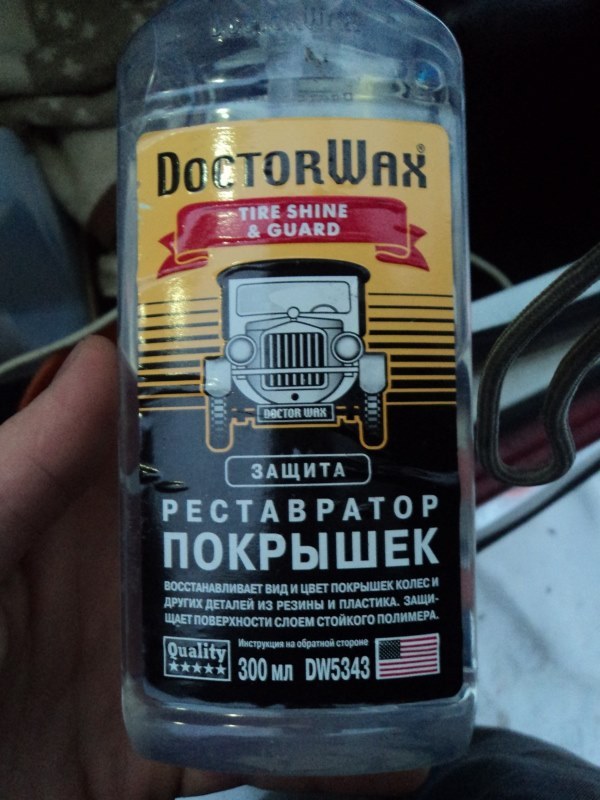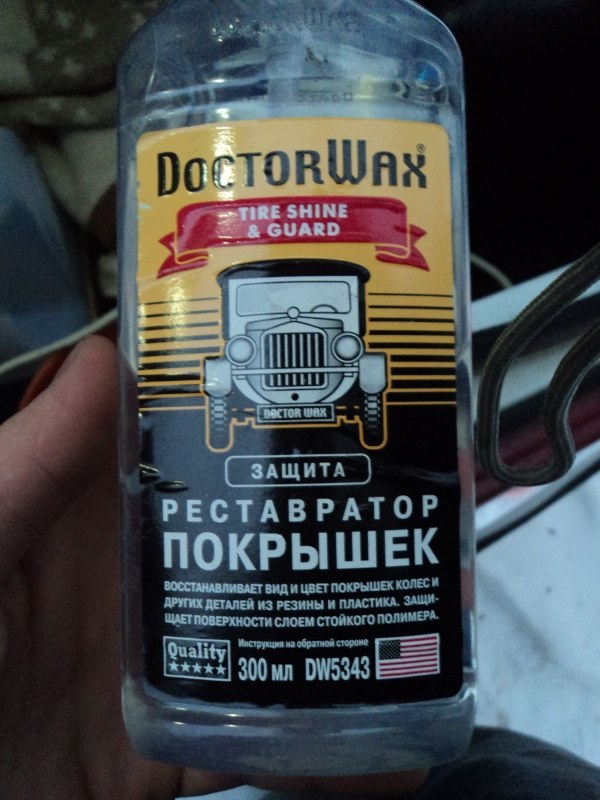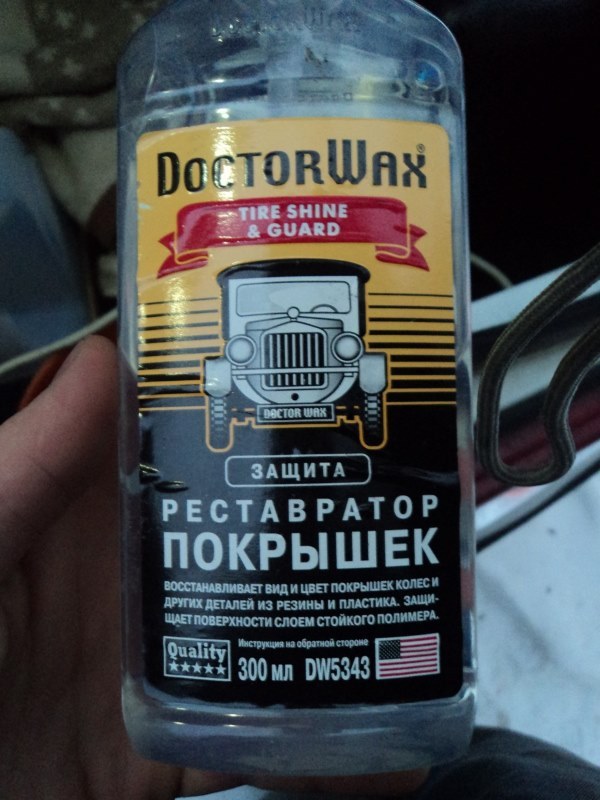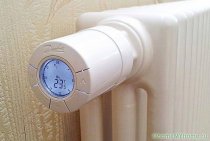What is needed to restore the elasticity of rubber
Rubber is considered one of the most resilient materials. It is for this reason that it is used in the manufacture of various seals. After the seal ceases to be affected by the load, it is able to return to its dimensions. This moment determines the spread of the question of how to restore the elasticity of rubber. Over time, this property is also lost. If the surface is worn too much, cracks appear, due to which the insulating qualities are significantly reduced.
You can soften rubber at home using common substances. The most commonly used substances are:
- Kerosene can easily restore the elasticity index. This substance is ideal for processing small products; you can soften them by soaking them.
- Ammonia can be used to soften the structure. To do this, it is enough to create a small bath in which the product is lowered for several hours.
When soaking rubber in a recovery liquid, it should be borne in mind that the material can increase significantly in size. To remove the substance from the surface, the product is thoroughly washed with soap and water.
In some cases, hot water can be used to soften the rubber. This method is used to restore the insulation of the doorway of the refrigerator. You can enhance the effect achieved by wetting the surface with silicone.
Seals from the material in question are also used in the manufacture of windows. To improve the insulating qualities of the rubber bands, they are wiped with silicone and glycerin from time to time. Such substances can be purchased without any problems.
Frequently asked questions - answers
What can replace silicone molds?
An excellent alternative is glass and ceramics.
What is the electrical conductivity of silicone?
It has very low electrical conductivity.
Which silicone is best for making molds?
The best series are E-Series, Mold Star Series, Equinox Series, Rebound Series.
How to glue silicone products at home?
You can use special adhesive for elastic products, silicone sealant, or fire to melt the torn edges and connect.
How to make liquid rubber at home?
The necessary ingredients are borax (1pack), PVA glue (2 bottles), water (0.5 cups), dye, containers and something for stirring. In one container, combine borax and water, stir until transparent. In the other - glue and dye. Stir the contents of both vessels and wait until the liquid hardens.
How long does silicone harden?
The drying period is influenced by many factors - humidity and air temperature, layer thickness. On average, a film forms in 15 minutes, and the substance hardens in 24 hours. Acid sealant dries in 4-6 hours, neutral - in a day. Also, the approximate “readiness” time is always indicated on the package.
A car surrounded by care stands out from the general flow. The motorist washes and polishes the body, cleans the plastic moldings. Tires are often the object of close cleaning. As you know, these parts lose their original appearance during the first year of operation. This is due to weather conditions and dust attack. The result - the car shines, and the rubber gives off a characteristic gray tint, only repulsive.
The heating
In a situation where it is not possible to put a hose on a rounded part or pipe, immersion of the desired part of the product in boiling water will help. After waiting a little, you need to remove the hose from the water and, without wasting time, install it in the right place. It will be quite easy to do this, since the material will steam out from the high temperature.
Sometimes there is a problem with the removal of rubber elements from some structural parts. In this case, air heating will be effective. A hair dryer is used. Under the influence of a hot jet, the material will expand, as a result of which it will be possible to scroll and pull off the pliable element.
With such simple methods, hardened rubber can be softened, thereby increasing the service life of popular products.
Instruction
Small rubber parts that have lost elasticity
from time to time, you can "reanimate" with ammonia or kerosene. Roll long and narrow rubber parts into a spiral. Prepare a weak solution of ammonia and immerse the products in it for 25-30 minutes. If you use kerosene, keep the rubber parts in it for at least 1-2 hours. During this time, the rubber will not only become softer, but may also increase in size. After ammonia and kerosene, wash the products in warm water with soap, then rinse in running water and wipe dry.
The door of the old one, which over time is elastic, the masters advise to pour boiling water over. This helps to restore the former properties of the rubber seal and restore the tightness of the door. To fix the effect, wipe the rubber surface with a cloth soaked in silicone. But this is a measure. If possible, try to replace such a part as soon as possible - it will not live long.
Rubber seals on double-glazed windows, so that they last longer, periodically, when washing windows, lubricate with a layer or glycerin, which can be purchased. But manufacturers advise treating them with special ready-made chemical compounds. They can be purchased at the salon of a company engaged in the production and installation of plastic windows, or on the Internet.
Restore elasticity
rubber
possible with the help of special chemicals. Try Novogum Extra - special, restorative elasticity
rubber
, which can also offset rubber sheets and rollers. Its cost is small - within 200 rubles. Another tool - Rubber Renew - will also help return rubber belts, rollers, belts and other parts. It should be applied to the surface of the product by moistening a napkin, swab or brush.
Over the years, the body loses its former elasticity
, skin and muscles become more flabby. This is a natural process, because the maximum production of collagen reaches a peak at 25 years. After this age, the content of the “main factor of elasticity” in the body begins to gradually decrease. To restore the elasticity of the body will help simple home care procedures.
You will need
The heating
In a situation where it is not possible to put a hose on a rounded part or pipe, immersion of the desired part of the product in boiling water will help. After waiting a little, you need to remove the hose from the water and, without wasting time, install it in the right place. It will be quite easy to do this, since the material will steam out from the high temperature.
Sometimes there is a problem with the removal of rubber elements from some structural parts. In this case, air heating will be effective. A hair dryer is used. Under the influence of a hot jet, the material will expand, as a result of which it will be possible to scroll and pull off the pliable element.
With such simple methods, hardened rubber can be softened, thereby increasing the service life of popular products.
14.03.2013
No matter how sad it is, but every thing has its own lifespan. And tires are no exception. After a certain time, it begins to lose its shape, becomes dry and hard, cracks and crumbles. And quite often in such a situation, when, as soon as possible, it is necessary to replace a damaged part, there is absolutely no time to go to the store for it, or there is simply no way. But, fortunately, it is still possible to urgently solve this problem.Consider in this article several ways to give rubber elements a second wind.
So, the materials you will need: glycerin, ammonia, kerosene and napkins.
Do not be surprised! It turns out that kerosene and ammonia can really help out when trying to resuscitate rubber parts. First you need to prepare a low concentrated solution of ammonia. Then roll the long and narrow rubber seals into a spiral. And keep them in the solution for about half an hour. If kerosene is at hand, we carry out the same procedure, only the rubber should be in this solution for at least 2 hours. Result - the parts will become noticeably softer and, perhaps, even a little larger than before. After the solutions, rubber products must be washed in non-hot water, using a soapy composition, then rinsed in clean water and dried.
The masters also found a solution for a short-term renewal of seals on refrigerator doors. In this case, it is recommended to pour boiling water over the rubber. It is said that for some time the sealant regains its lost elasticity and sealing ability. And in order to consolidate the effect obtained, you can treat the rubber surface with a napkin impregnated with a silicone composition. However, we recall once again that the effect will not last long, so it is necessary to replace the obsolete part as soon as possible.
Many of us have already installed plastic windows for a long time. But not everyone knows that if the seals on double-glazed windows are properly cared for, they will last much longer. So, you just need to lubricate the rubber elements with a layer of ordinary glycerin or silicone every time you wash windows. And for the best result, it is better to use specially designed chemical compositions from window manufacturers. As a rule, they should be offered by employees of the company in which you place an order, immediately. Although, however, today it is not at all difficult to find such a solution on the Internet.
Do-it-yourself rubber restoration
All materials lose their performance over time. Often you can find a situation where the rubber becomes too hard and loses its elasticity. If desired, you can restore the basic properties of the material, it is not necessary to throw it away. Rubber can be softened in a variety of ways. Among the features of this issue, we note the following points:
- Rubber cuffs and seals of some devices lose their basic properties over time. In this case, you can buy new consumables, since their cost is relatively low.
- Some elements are difficult to find on sale, due to their unusual shape and properties. In this case, softening can be carried out using various common technologies.
There are quite a number of different ways to soften rubber, the most common is the use of kerosene.
Heating is an effective method
There are situations when the rubber element is difficult to remove from structural parts due to its hardening. You can achieve the desired result by heating the rubber with a stream of hot air using a hair dryer. When exposed to high temperature, the material will become softer, it can be pulled out of the part.
Too "hardened" element is softened by boiling in salted water. The technology is as follows:
- fill the container with salted water;
- let the liquid boil;
- place the rubber element in boiling water for 10 minutes;
- remove the rubber and quickly use it for its intended purpose.
This method is quite effective, but has a short-term effect. When it cools down, the rubber becomes stiff again.
Origin of rubber
One of the most useful plants for the history of mankind was and remains hevea - a tree from whose juice rubber is made.It grows in the tropical climate of South America and Southeast Asia. Initially, hevea originated from Brazil: the Indians living in the Amazon jungle have long used the juice of this plant for medical (disinfection of wounds and stopping blood), industrial (waterproof shoes and raincoats) and even gaming purposes. In particular, it was the Indians who created the first rubber ball for games similar to modern football.
The British brought Hevea from South America, and at the beginning of the 20th century they began to plant it in their Asian colonies. It was then that plantations appeared in Thailand, Cambodia, Malaysia, Indonesia and Vietnam. At the moment, Thailand is the largest supplier of natural rubber.
Recovery methods
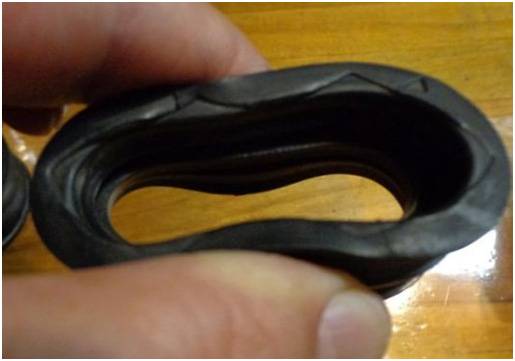
Rubber elements under the influence of external factors lose their original properties, become less elastic, harden. Their further use will not bring the desired effect, seals, for example, will not be able to make the system completely sealed. The purchase of new rubber elements is sometimes difficult due to the lack of products of the required sizes or their overestimated cost.
The following substances allow you to soften rubber:
- Kerosene. Allows you to make rubber parts soft by affecting the structure of the material. After processing, the rubber element becomes fully elastic. Recovery technology is as follows:
- fill a small container with kerosene (select the container size depending on the size of the product to be restored);
- place the part in a container with kerosene for 3 hours;
- after the specified time, check the product for softness, if the result is satisfactory: remove the material and rinse with warm running water;
- dry the material in a natural way, without using a hair dryer or battery.
- Alcohol ammonia. The process of restoring old material is as follows:
- dilute the indicated alcohol with water in a ratio of 1: 7;
- place the rubber material in the resulting solution for half an hour;
- after the specified time, remove the part and rinse with warm running water;
- Allow the parts to dry completely before using them.
Please note: you can not keep rubber in a solution of ammonia and water for more than an hour. If the material does not become elastic after 30 minutes, use another recovery method.
- Medical alcohol followed by the use of glycerin. The technology of "reanimation" of rubber parts:
- fill the container with medical alcohol;
- put in alcohol a part that needs to be restored for several hours;
- after the specified time, check the condition of the product, if it is soft enough, remove the element from the solution and wash it with warm soapy water;
- rub glycerin into the surface of the part using a sponge (cloth);
- remove any remaining glycerine from the surface of the product.
Instead of glycerin, it is allowed to use automobile oil, it is rubbed into the surface of the product, then the part is kept for half an hour before use. During this period, the rubber becomes sufficiently elastic.
- Castor oil and silicone. Let's make a reservation right away - this method allows you to quickly "reanimate" old rubber, but the recovery effect will not last long, after a few days the product will become solid. For this method, follow the sequence:
- smear the part with silicone;
- wait 10 minutes;
- after the specified time, the part can be used.
Note: a similar effect is achieved by using castor oil. It is rubbed into the surface of the part, after which it becomes soft and elastic.
We recommend watching a video about softening rubber using ammonia:
Origin of rubber
One of the most useful plants for the history of mankind was and remains hevea - a tree from whose juice rubber is made.It grows in the tropical climate of South America and Southeast Asia. Initially, hevea originated from Brazil: the Indians living in the Amazon jungle have long used the juice of this plant for medical (disinfection of wounds and stopping blood), industrial (waterproof shoes and raincoats) and even gaming purposes. In particular, it was the Indians who created the first rubber ball for games similar to modern football.
The British brought Hevea from South America, and at the beginning of the 20th century they began to plant it in their Asian colonies. It was then that plantations appeared in Thailand, Cambodia, Malaysia, Indonesia and Vietnam. At the moment, Thailand is the largest supplier of natural rubber.
Do-it-yourself rubber restoration
All materials lose their performance over time. Often you can find a situation where the rubber becomes too hard and loses its elasticity. If desired, you can restore the basic properties of the material, it is not necessary to throw it away. Rubber can be softened in a variety of ways. Among the features of this issue, we note the following points:
- Rubber cuffs and seals of some devices lose their basic properties over time. In this case, you can buy new consumables, since their cost is relatively low.
- Some elements are difficult to find on sale, due to their unusual shape and properties. In this case, softening can be carried out using various common technologies.
There are quite a number of different ways to soften rubber, the most common is the use of kerosene.
Casting a mold
The compound is a two-component material consisting of silicone paste and a hardener (catalyst). This is not exactly DIY silicone. But still.
By mixing these components in the correct proportion, you will get a miracle mixture for casting any kind of shape.
The catalyst does not allow the silicone to harden as quickly as in the first case.
So. You have a very beautiful shape and you need to copy it in silicone format.
- Take the container, make sure that it has no gaps and does not leak.
- Place a model of a plastic or plaster toy in the form of a bear into it.
- Fill the box with the model with dry mix or sand to get an idea of how much silicone will be needed to fill in milliliters.
- We process our bear with soapy water or sunflower oil, pour silicone.
- Think in advance how you will close this box hermetically.
- We wait approximately 15 minutes.
- We disassemble the container, check that the silicone does not stick to the fingers.
- Cut the silicone lengthwise with a utility knife.
- Replicate now this form with the resulting silicone mold as much as you want.
With liquid or cast silicone, molds can be made on platinum.
- Styrofoam or gypsum platinum is treated with the same soap solution.
- Apply liquid silicone with a brush.
- First, we work out the details, the upper layers are plentiful.
- Let's dry. It will take time here.
- We remove silicone. Sleight of hand, as they say, and no cheating.
How to make rubber elastic
Experts recommend considering each specific case, which can significantly increase the efficiency of the work being done. You can soften the rubber in the following way:
- Rigidity increases if the rubber is kept dry for a long time. Elasticity is restored by wetting the surface with oil. Softening is recommended to be carried out periodically to achieve the desired result.
- Car wipers can be lubricated with silicone grease, due to which the surface is softened. Of course, it is possible to restore the old structure only if there are no mechanical defects.
In addition, on sale you can find special compounds that can soften the structure after application.
The heating
In a situation where it is not possible to put a hose on a rounded part or pipe, immersion of the desired part of the product in boiling water will help. After waiting a little, you need to remove the hose from the water and, without wasting time, install it in the right place. It will be quite easy to do this, since the material will steam out from the high temperature.
Sometimes there is a problem with the removal of rubber elements from some structural parts. In this case, air heating will be effective. A hair dryer is used. Under the influence of a hot jet, the material will expand, as a result of which it will be possible to scroll and pull off the pliable element.
With such simple methods, hardened rubber can be softened, thereby increasing the service life of popular products.
What is needed to restore the elasticity of rubber
Rubber is considered one of the most resilient materials. It is for this reason that it is used in the manufacture of various seals. After the seal ceases to be affected by the load, it is able to return to its dimensions. This moment determines the spread of the question of how to restore the elasticity of rubber. Over time, this property is also lost. If the surface is worn too much, cracks appear, due to which the insulating qualities are significantly reduced.
You can soften rubber at home using common substances. The most commonly used substances are:
- Kerosene can easily restore the elasticity index. This substance is ideal for processing small products; you can soften them by soaking them.
- Ammonia can be used to soften the structure. To do this, it is enough to create a small bath in which the product is lowered for several hours.
When soaking rubber in a recovery liquid, it should be borne in mind that the material can increase significantly in size. To remove the substance from the surface, the product is thoroughly washed with soap and water.
In some cases, hot water can be used to soften the rubber. This method is used to restore the insulation of the doorway of the refrigerator. You can enhance the effect achieved by wetting the surface with silicone.
Seals from the material in question are also used in the manufacture of windows. To improve the insulating qualities of the rubber bands, they are wiped with silicone and glycerin from time to time. Such substances can be purchased without any problems.
Use of silicone sealant
Nothing complicated either. Even easier than anything before.
- Squeeze out any silicone sealant onto a plate.
- Add potato starch.
- Knead the rubber dough.
- This mass is ideal for making molds.
- The workpiece, and it can be anything, is lubricated with oil or hand cream.
- Cover with silicone.
- Forget about this until tomorrow.
- The silicone is frozen, cut along with a clerical knife, take out the workpiece - you're done! Everything ingenious is simple.
Second option. We roll a ball from the same dough, press the blank of the future mold into it. Well, let's say a coin. We smooth the edges. After the same few hours, we check the degree of hardening of the silicone. We take out the money, the mold is ready!

Do-it-yourself rubber restoration
All materials lose their performance over time. Often you can find a situation where the rubber becomes too hard and loses its elasticity. If desired, you can restore the basic properties of the material, it is not necessary to throw it away. Rubber can be softened in a variety of ways. Among the features of this issue, we note the following points:
- Rubber cuffs and seals of some devices lose their basic properties over time.In this case, you can buy new consumables, since their cost is relatively low.
- Some elements are difficult to find on sale, due to their unusual shape and properties. In this case, softening can be carried out using various common technologies.
There are quite a number of different ways to soften rubber, the most common is the use of kerosene.
What is needed to restore the elasticity of rubber
Rubber is considered one of the most resilient materials. It is for this reason that it is used in the manufacture of various seals. After the seal ceases to be affected by the load, it is able to return to its dimensions. This moment determines the spread of the question of how to restore the elasticity of rubber. Over time, this property is also lost. If the surface is worn too much, cracks appear, due to which the insulating qualities are significantly reduced.
You can soften rubber at home using common substances. The most commonly used substances are:
- Kerosene can easily restore the elasticity index. This substance is ideal for processing small products; you can soften them by soaking them.
- Ammonia can be used to soften the structure. To do this, it is enough to create a small bath in which the product is lowered for several hours.
When soaking rubber in a recovery liquid, it should be borne in mind that the material can increase significantly in size. To remove the substance from the surface, the product is thoroughly washed with soap and water.
In some cases, hot water can be used to soften the rubber. This method is used to restore the insulation of the doorway of the refrigerator. You can enhance the effect achieved by wetting the surface with silicone.
Seals from the material in question are also used in the manufacture of windows. To improve the insulating qualities of the rubber bands, they are wiped with silicone and glycerin from time to time. Such substances can be purchased without any problems.
What is needed to restore the elasticity of rubber
Rubber is considered one of the most resilient materials. It is for this reason that it is used in the manufacture of various seals. After the seal ceases to be affected by the load, it is able to return to its dimensions. This moment determines the spread of the question of how to restore the elasticity of rubber. Over time, this property is also lost. If the surface is worn too much, cracks appear, due to which the insulating qualities are significantly reduced.
You can soften rubber at home using common substances. The most commonly used substances are:
- Kerosene can easily restore the elasticity index. This substance is ideal for processing small products; you can soften them by soaking them.
- Ammonia can be used to soften the structure. To do this, it is enough to create a small bath in which the product is lowered for several hours.
When soaking rubber in a recovery liquid, it should be borne in mind that the material can increase significantly in size. To remove the substance from the surface, the product is thoroughly washed with soap and water.
In some cases, hot water can be used to soften the rubber. This method is used to restore the insulation of the doorway of the refrigerator. You can enhance the effect achieved by wetting the surface with silicone.
Seals from the material in question are also used in the manufacture of windows. To improve the insulating qualities of the rubber bands, they are wiped with silicone and glycerin from time to time. Such substances can be purchased without any problems.
Necessary materials
We purchase liquid glass and ethyl alcohol. We mix the ingredients in equal proportions 1:1. Any plastic container can serve as a container.
Silicone hardens quickly when it comes into contact with air, so you need to cook quickly or in small quantities.
When mixing liquid glass and alcohol according to your mood, add a dye, such as gouache, so that the final result is the desired color.
Frequently Asked Questions:
What is silicone?
What does silicone look like?
The appearance depends on its components, on the degree of density (liquid, gel-like, solid) and the presence of coloring substances. The color varies from transparent to any color.
What is lubricating silicone?
How to make liquid silicone?
It is important to know the type of silicone in order to select the right solvent. Sometimes gasoline and alcohol are used
How to melt silicone at home?
In a vessel (resistant to high temperatures), finely chop the silicone, sort if colored. You can put it in the microwave, but you should not do this in the apartment because of the subsequent unpleasant smell
It is better to try to melt on fire, it is important not to overheat, otherwise it will deteriorate
Total
You can buy tire blackener, or you can invent it yourself. The store will have to pay at least 200 rubles. The cost of a homemade tool is estimated at much lower numbers.
So, a simple composition based on glycerin and water, diluted 1: 7, will cost about 15-20 rubles for the money - the cost of one bottle of alcohol composition, which is more than enough for one treatment. The recipe with shoe polish, glycerin and cola is much more expensive, but the result is more stable. An alternative is to treat the tires with shoe polish or black shoe polish. The view is good and resistant to water.
Since the beginning of the 2000s, automotive cosmetology has been experiencing a real “renaissance”, if the processes occurring in it can be attributed to this trend. This movement became especially popular during the arrival of manufacturers and the expansion of the range of goods at affordable prices. Almost every system had several dozen types of improvements that could previously be dreamed of. The general interest touched both foreign cars and the domestic auto industry. In both cases, the tire blackening technique has become very popular. But those who want to pay a little, especially if a similar effect can be achieved using do-it-yourself rubber ink.
Self-made rubber ink with your own hands shows a good result
